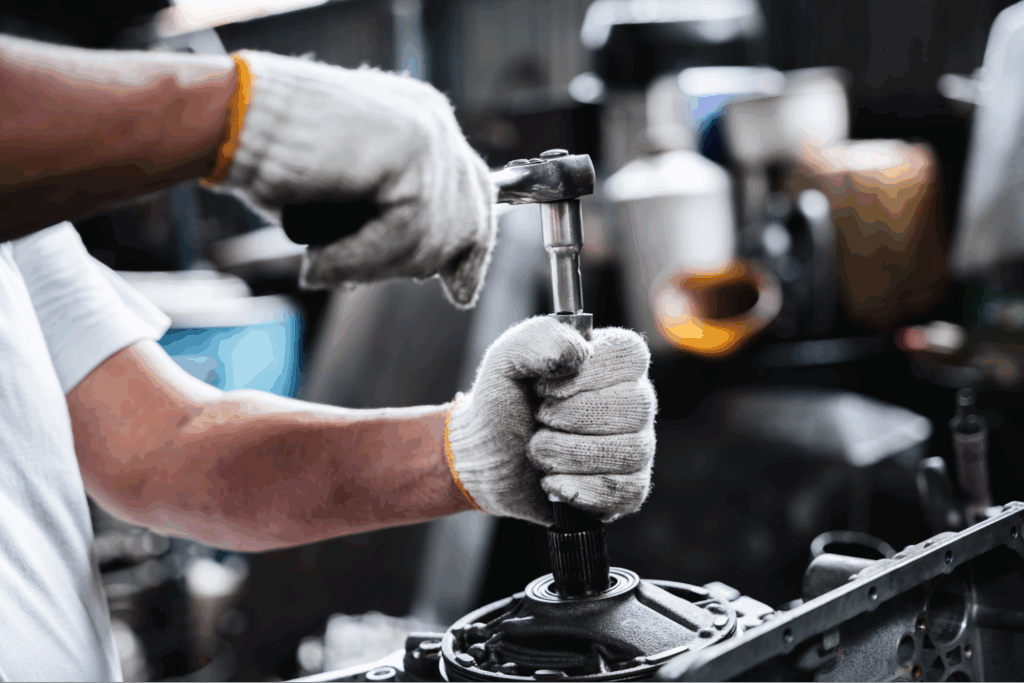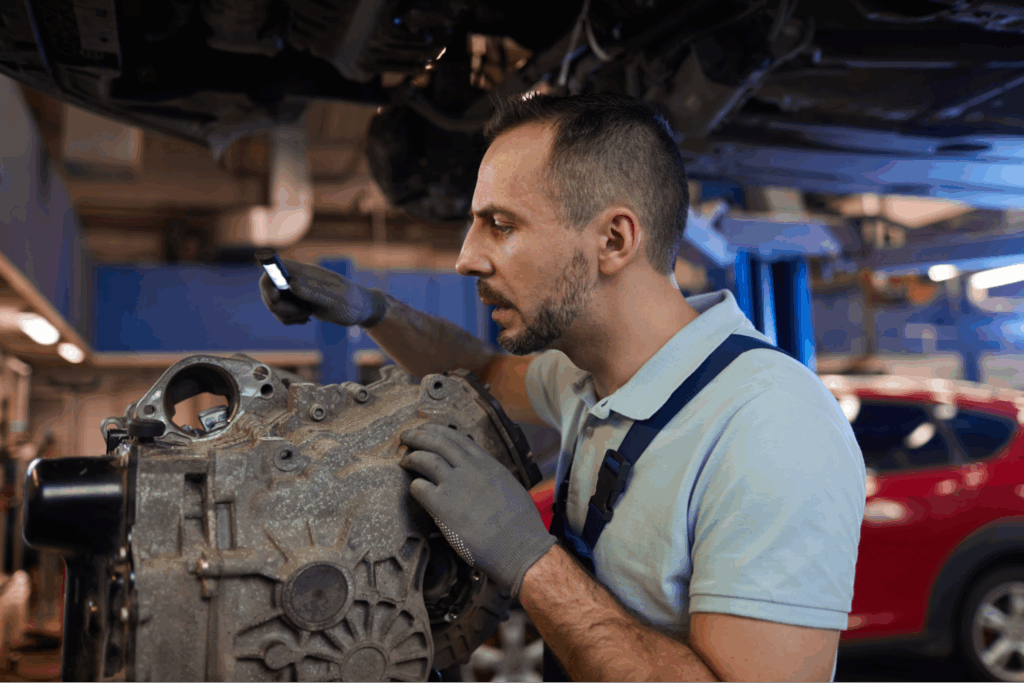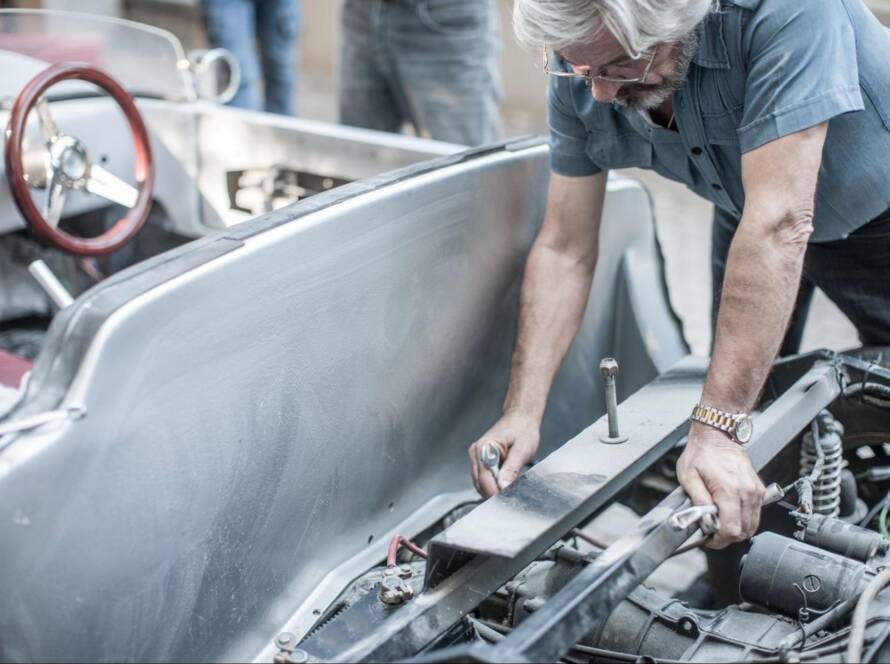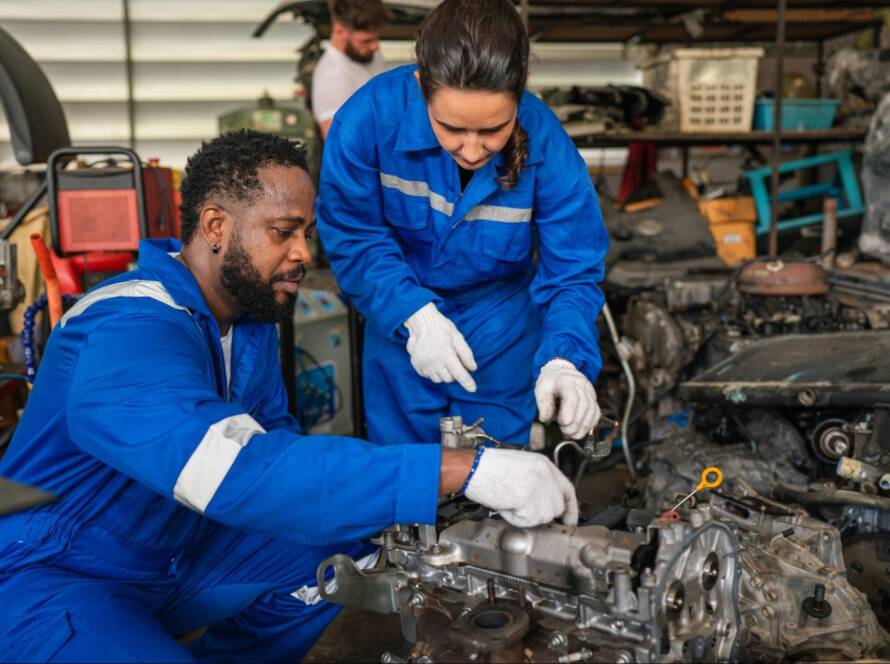The transmission system often needs attention when a vehicle starts experiencing gear slipping, grinding noises, or delayed response. The transmission plays a central role in ensuring the engine’s power is delivered to the wheels efficiently, allowing smooth gear changes and optimal vehicle performance. If something goes wrong, a professional transmission repair service becomes essential. Many drivers understand the importance of their vehicle’s transmission, but few know what happens during a professional repair. Whether you drive a manual or an automatic, understanding the transmission repair process can help you make informed decisions and avoid unnecessary expenses. This blog offers a step-by-step look into the process from diagnostics to road testing, clarifying what to expect when your vehicle is in the shop.
What You Should Know Before Transmission Repair
To fully grasp the value of professional transmission repair, it’s essential first to understand how the transmission works. The transmission takes the engine’s power and adjusts it according to driving conditions, determining how much power is sent to the wheels. In an automatic transmission, this process happens without driver input, while manual transmissions require the driver to shift gears using a clutch and gear stick. Inside the transmission are several critical components, including clutches, planetary gears, torque converters, sensors, and fluid systems. These parts work together seamlessly, but the entire system can suffer if even one malfunctions. Because of this complexity, transmission issues are rarely straightforward, and professional service is often necessary to identify and resolve the root cause.
Inspection and Diagnosis for Transmission Repair
Before any repairs begin, a complete inspection and diagnosis are performed to ensure the root cause of the problem is identified correctly. Since many transmission issues share similar symptoms, accurate diagnosis is key to avoiding unnecessary repairs.
Visual Inspection of the Transmission System
The technician starts by visually inspecting the transmission and its components. This type of inspection includes examining the color and consistency of the transmission fluid, checking for leaks, and inspecting the housing for cracks or visible damage. Burnt or darkened fluid may indicate internal overheating or excessive wear.
Checking for Transmission Fluid Condition
The state of the transmission fluid is a crucial indicator of internal health. If the fluid appears dirty, smells burnt, or is low in quantity, it often signals more serious problems inside the transmission that require further investigation.
Inspecting for Leaks and Housing Damage
During the inspection, technicians look for leaks around seals and gaskets and inspect the housing for structural damage. Any signs of moisture, cracks, or corrosion can help narrow down potential causes of transmission malfunction.
Diagnostic Scanning With OBD-II Tools
Modern vehicles come equipped with onboard diagnostics systems (OBD-II). Using a scan tool, technicians retrieve error codes that provide insight into transmission-related components such as shift solenoids, pressure sensors, or the transmission control module.
Interpreting Error Codes and System Data
The error codes stored in the vehicle’s computer system offer vital clues. These codes can indicate which parts of the transmission are failing or not responding as they should, streamlining the troubleshooting process.
Performing a Test Drive for Real-World Symptoms
A test drive helps confirm the symptoms and uncover issues not detected during static inspection. Technicians observe how the vehicle behaves during acceleration, shifting, and deceleration while listening for noises or delays in gear engagement.
Monitoring Performance During the Road Test
During the road test, any slipping, jerking, or hesitation is noted. These symptoms help pinpoint problems that might not be detected by visual inspection or diagnostics alone, offering a complete picture of the transmission’s condition.
Identifying the Scope of Transmission Repair
After completing the diagnostic process, the technician determines the extent of the repair. This step is crucial for deciding whether a minor fix, a rebuild, or a complete replacement is the most appropriate solution.
Determining the Severity of the Issue
Not all transmission problems require significant repairs. Sometimes, the solution may involve replacing a faulty sensor, topping off fluid levels, or tightening loose connections. These minor issues can often be resolved quickly and without removing the transmission.
Recognizing When Internal Damage is Present
If the technician identifies internal damage, such as worn clutches, broken bands, or damaged gears, more involved work becomes necessary. These problems typically require the transmission to be removed from the vehicle for a complete internal inspection and repair.
Deciding Between a Rebuild or Replacement
Once the transmission is out and the damage is assessed, the shop will consider whether a rebuild or a complete replacement is better. Factors like the condition of internal parts, labor costs, and long-term reliability all influence this decision.
Consulting With the Vehicle Owner
At this stage, the repair shop will communicate with you directly. They’ll explain the findings, outline the repair options, and provide a precise estimate. This conversation ensures you’re fully informed before authorizing any work.
Evaluating Vehicle Age and Parts Availability
The age of your vehicle and the availability of replacement parts play a significant role in repair planning. For older cars or rare models, sourcing parts may be difficult or expensive, which can shift the recommendation toward replacement instead of repair.
Receiving Honest Guidance From the Shop
A reputable transmission repair facility won’t push unnecessary services. Instead, they will walk you through the pros and cons of each repair option, helping you make a financially and mechanically sound decision.

Removal and Replacement When Doing Transmission Repair
When internal transmission repair or replacement is necessary, the next step is removing the transmission from the vehicle. This process is both labor-intensive and delicate, requiring skill and precision. The technician first lifts the car and carefully disconnects the transmission from related systems. These include the driveshaft or CV axles, cooling lines, gear linkage, transmission mounts, sensors, and electrical connectors. Depending on whether the vehicle is front-wheel drive or rear-wheel drive, this procedure can vary slightly, but in all cases, it must be done with care to prevent damage to surrounding components. Once everything is detached, the transmission is gently lowered and taken to a workbench for complete disassembly. The removal process alone can take several hours, especially in vehicles with complex drivetrains or limited engine bay access.
Disassembly and Internal Inspection of Your Transmission
With the transmission out of the vehicle, the technician begins the disassembly. This phase is critical to uncovering what caused the issue and determining which parts need to be replaced or refurbished. Each internal component is carefully removed and laid out in an organized fashion. The technician examines the condition of clutch packs, torque converters, planetary gear sets, and seals. Measurements are taken to compare the wear against factory specifications, ensuring all tolerances are within acceptable limits. Cleaning is a significant part of this step. Transmission parts are typically soaked or blasted with industrial-grade cleaning solutions to remove debris, metal shavings, and old fluid. This step helps the technician inspect more thoroughly and ensures no contaminants remain in the system once reassembly begins.
Reinstallation of the Transmission After Repair
Once the transmission has been repaired, rebuilt, or replaced, it is reinstalled into the vehicle. This stage involves carefully reconnecting all parts that were detached during removal. Mounts are secured, fluid lines are reattached, electrical systems are reconnected, and driveshafts or axles are installed. New transmission fluid is added to the system, and the proper level and pressure are checked. In vehicles with computer-controlled transmissions, the technician may need to reprogram or reset the transmission control module to ensure it communicates properly with the engine and onboard diagnostics system. Because the reinstallation process involves many moving parts and connections, the technician will double-check each system to confirm everything is aligned correctly and functioning before moving on to final testing.
Post-Transmission Repair Testing and Verification
No transmission repair service is complete without post-repair testing. This final phase ensures that the vehicle performs as expected under real-world conditions and that the transmission problem has been fully resolved. The technician conducts another road test, monitoring smooth gear transitions, acceleration response, unusual vibrations, and noises. The vehicle’s diagnostics system is scanned again to verify that no new error codes have appeared and that all previously logged faults have been cleared. In the shop, additional checks are made to confirm that the transmission fluid is at the correct level and that there are no leaks or signs of overheating. This attention to detail ensures that the repair was successful and that the vehicle is safe and reliable for everyday driving.

Transmission Repair Time and Cost Considerations
The duration of a transmission repair can vary depending on the issue’s complexity. Minor maintenance may take one to two days, while a complete rebuild or replacement can require several days or even a whole week if parts need to be ordered. Cost also varies based on the scope of work. A minor transmission repair might cost a few hundred dollars, while a rebuild could range between $1,500 and $3,500. Depending on the vehicle’s make and model, a complete replacement might reach $5,000 or more. While the price may seem high, a professional transmission repair is an investment in your vehicle’s safety, performance, and long-term value.
Why Professional Transmission Repair Matters for Your Vehicle’s Performance
Transmission problems can be stressful, especially when you’re unsure what’s involved in the repair process. Understanding the detailed steps of a professional transmission repair—from diagnosis to final testing—helps you feel more confident and informed as a vehicle owner. Choosing a certified and experienced repair shop ensures the work is done correctly the first time. From careful diagnostics and disassembly to skilled reassembly and quality testing, every step in the process matters. Whether you need a minor fix or a complete rebuild, trusting the experts is the key to restoring your vehicle’s performance and extending its lifespan. If your car shows signs of transmission trouble, don’t wait until the issue worsens. Schedule a transmission repair service with a trusted professional and keep your vehicle running strong for years. For more information about transmission repair, please visit our Dark Night Specialties blog.



